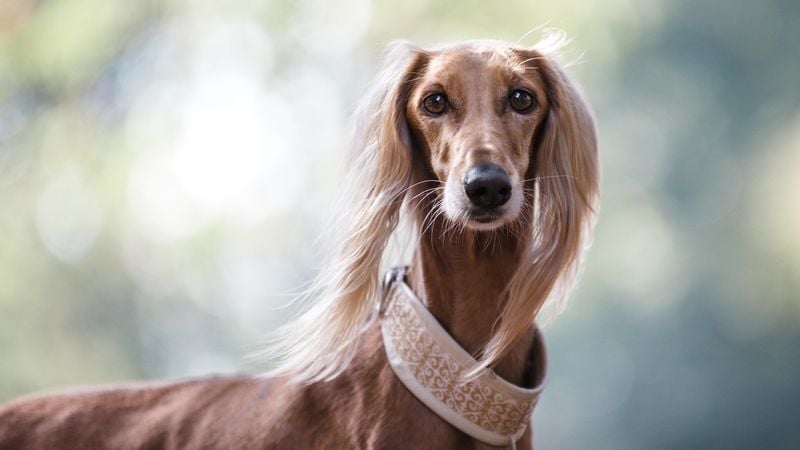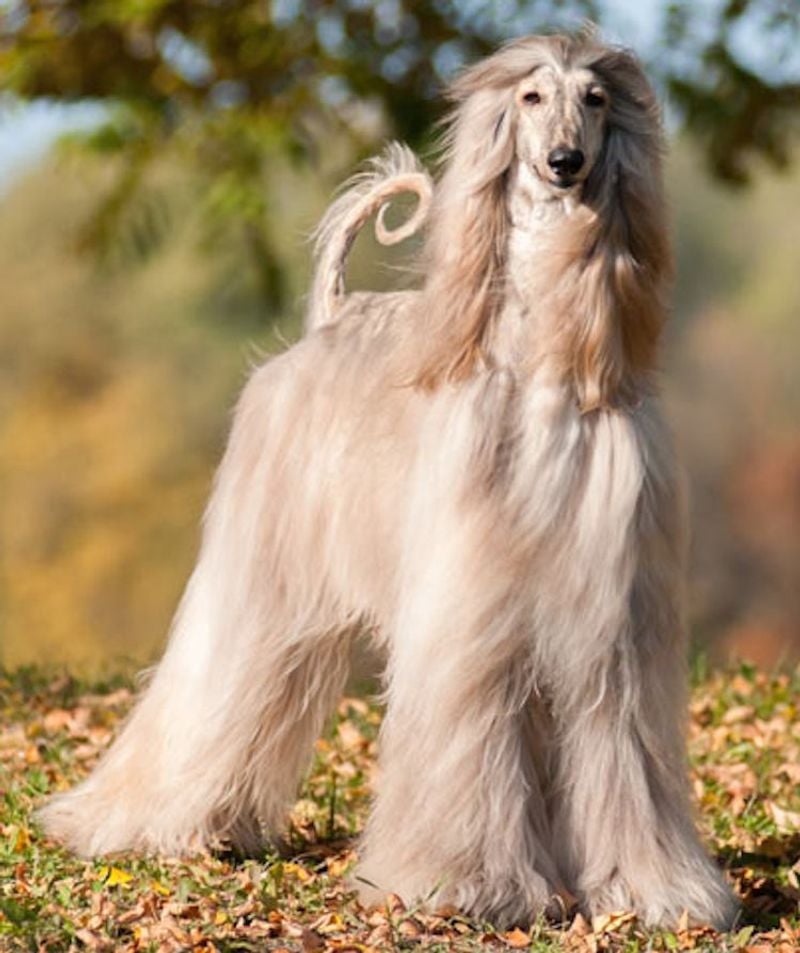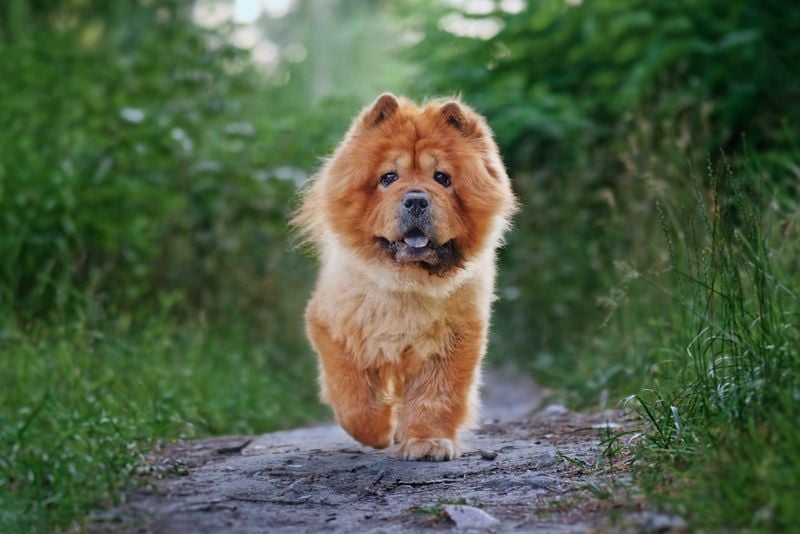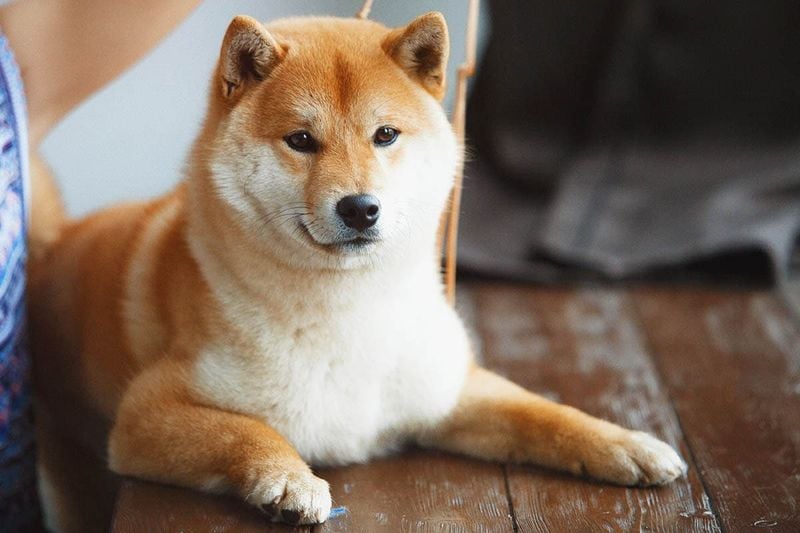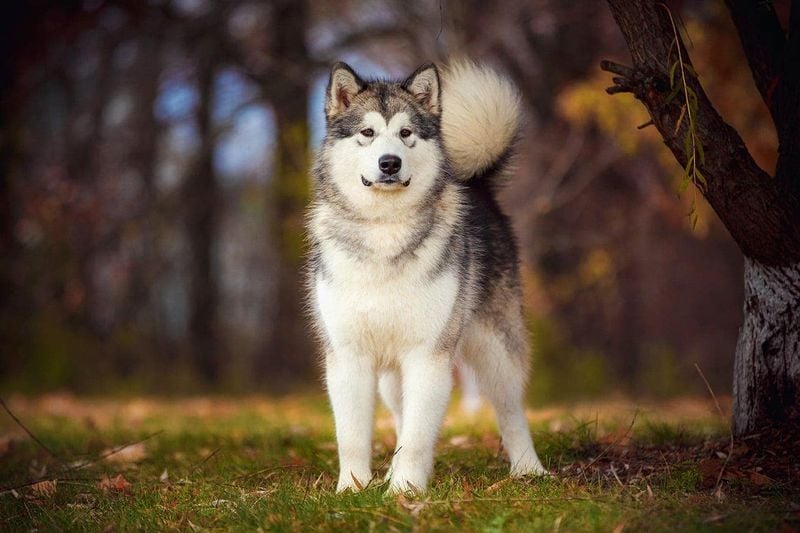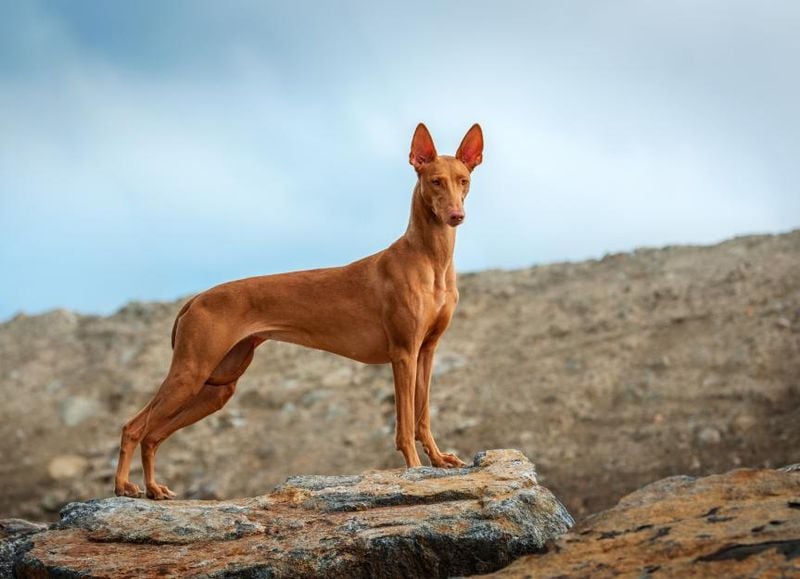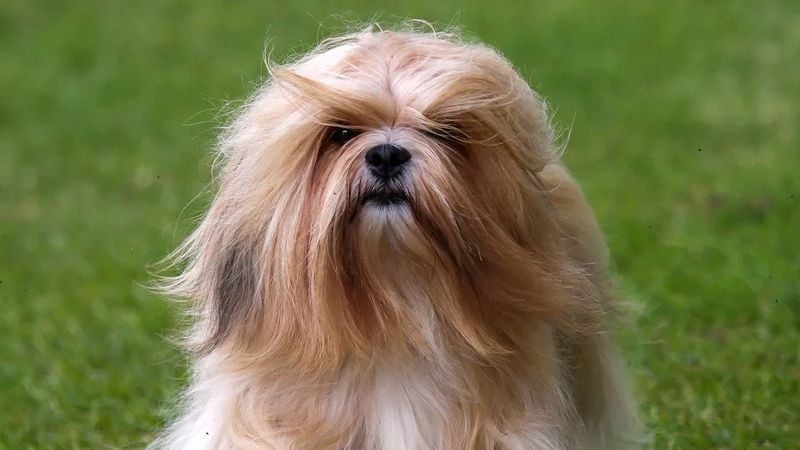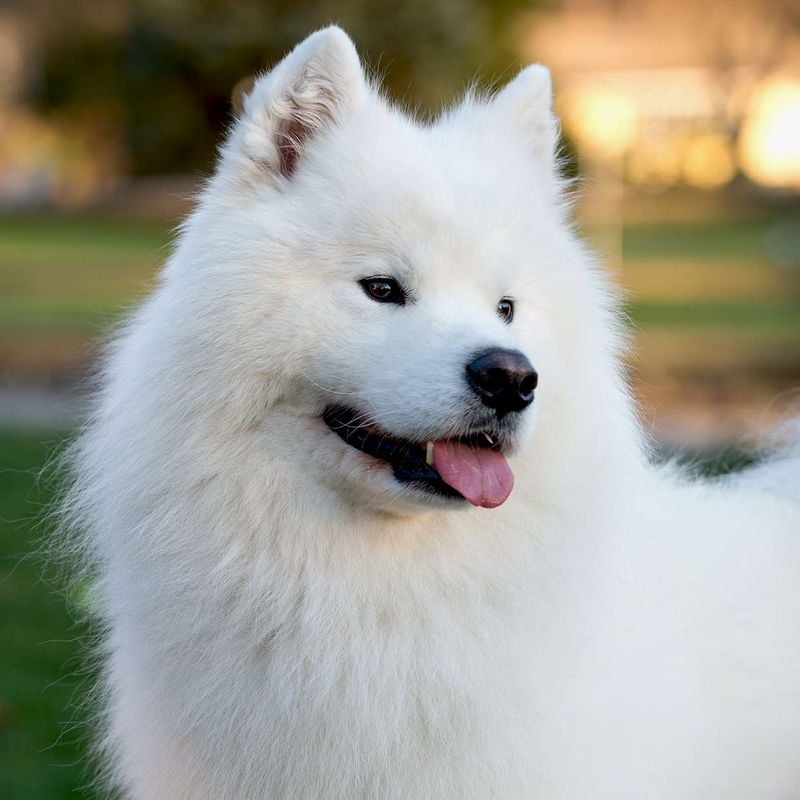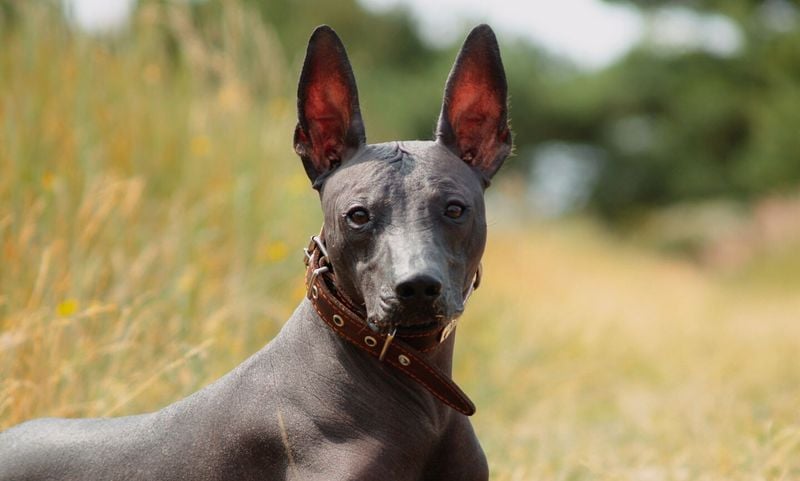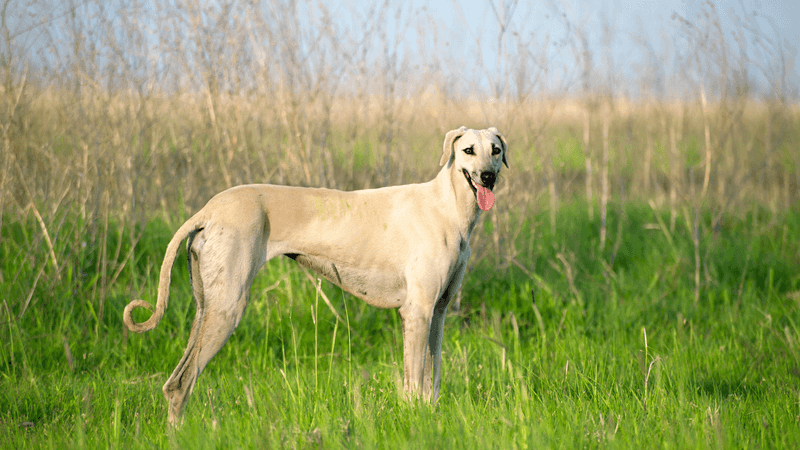15 Ancient Dog Breeds Still Winning Hearts Today
Dogs have been our loyal companions for thousands of years, with some breeds tracing their origins back to ancient civilizations. These historic canines have survived through centuries of human history, adapting alongside us while maintaining their distinctive traits and characteristics.
From royal courts to nomadic tribes, these ancient breeds have played important roles throughout human history and continue to captivate dog lovers today with their unique personalities, remarkable abilities, and fascinating heritage.
1. Basenji: The Barkless Wonder
Originating in central Africa thousands of years ago, Basenjis appear in ancient Egyptian artifacts dating back to 3000 BCE. These elegant hounds don’t bark—instead, they make unique yodel-like sounds called “barroos” when excited.
Their cat-like grooming habits and independent nature make them fascinating companions. With short coats requiring minimal maintenance, they’re surprisingly clean pets despite their mischievous personalities.
Basenjis possess remarkable intelligence but also a stubborn streak that challenges first-time dog owners. Their curious expressions and wrinkled foreheads give them an eternally inquisitive appearance that dog enthusiasts find irresistible.
2. Saluki: The Royal Desert Hound
Salukis grace tombs of Egyptian pharaohs dating back to 2100 BCE, making them among the world’s oldest recognized dog breeds. Arab nomads cherished these swift hunters for their remarkable speed—capable of reaching 40 mph—and considered them sacred gifts from Allah.
Their slender bodies, feathered ears, and expressive eyes reflect an aristocratic elegance that has remained unchanged for millennia. Gentle and reserved with family, they maintain a dignified aloofness with strangers.
Modern Salukis retain their strong prey drive and love of running. A fascinating historical note: they were the only dogs allowed in Bedouin tents, sleeping alongside their nomadic masters while other dogs remained outside.
3. Akita Inu: Japan’s Loyal Guardian
Samurai warriors prized Akitas as hunting companions and status symbols during Japan’s feudal period. These powerful dogs tracked bear, boar, and deer through mountainous terrain, demonstrating their remarkable courage and strength.
Hachikō, perhaps the most famous Akita, waited at a Tokyo train station for nine years after his owner’s death, becoming a national symbol of loyalty. The breed nearly faced extinction during World War II but was saved by dedicated enthusiasts.
Modern Akitas remain fiercely devoted to their families while maintaining a natural wariness toward strangers. Their double coats change dramatically with seasons, and their curled tails and bear-like faces give them a distinctive, noble appearance that commands respect.
4. Afghan Hound: The Aristocrat of Dogs
Nomadic tribes in Afghanistan’s mountains developed these majestic sighthounds to hunt gazelles and hares across rugged terrain. Their flowing silky coats served as insulation against harsh mountain climates, while their speed and agility made them exceptional hunters.
Ancient cave paintings in Afghanistan depict these elegant dogs, suggesting their existence for thousands of years. Their almond-shaped eyes and distinctive topknot give them a perpetually dignified expression.
Behind their glamorous appearance lies an independent spirit and surprising athleticism. Afghan Hounds possess a playful side that contrasts with their regal bearing. Their combination of beauty and ancient lineage has earned them the nickname “King of Dogs” among enthusiasts worldwide.
5. Chow Chow: The Lion-Dog of China
Han Dynasty emperors kept Chow Chows as hunting companions and palace guardians over 2,000 years ago. Their distinctive blue-black tongues and lion-like manes made them symbols of nobility in ancient China.
Marco Polo described encountering these bear-like dogs during his 13th-century travels to Asia. Their unique straight-backed hind legs create their characteristic stilted gait that appears almost mechanical when they walk.
Despite their cuddly teddy bear appearance, Chows maintain a dignified, somewhat aloof personality. Fiercely loyal to their chosen people, they form deep bonds while remaining naturally reserved. An interesting fact: Buddhist monasteries used Chow Chows as both guardians and sources of warm fur for winter garments.
6. Shiba Inu: The Spirited Forest Hunter
Archaeological evidence suggests Shibas accompanied Japan’s earliest settlers, hunting small game through mountainous forests. Their name combines “shiba” (brushwood) and “inu” (dog), reflecting their original purpose flushing birds and game from dense underbrush.
These compact, fox-like dogs nearly disappeared during World War II when bombing and distemper decimated their numbers. Only three bloodlines survived, forming the foundation of all modern Shibas.
Famous for their bold, confident personalities, Shibas possess what Japanese breeders call “Urajiro”—distinctive cream-colored markings on their cheeks, muzzle, and underside. Their spirited nature and adorable expressions have made them internet sensations in recent years, though their ancient heritage dates back thousands of years before their meme fame.
7. Tibetan Mastiff: The Sacred Himalayan Guardian
Nomadic tribes across the Himalayan plateau developed these massive guardians to protect livestock from predators like snow leopards and wolves. Their thick double coats allowed them to withstand temperatures dropping to -40°F while guarding remote mountain settlements.
Buddhist monasteries considered Tibetan Mastiffs sacred protectors, believing they held the souls of monks who hadn’t achieved Nirvana. Their massive size—males can exceed 150 pounds—combined with lion-like manes created an imposing presence that deterred intruders.
Historically isolated in remote mountain regions, these dogs remained largely unchanged for centuries. Marco Polo described them as “tall as a donkey with a voice as powerful as a lion.” Modern Tibetan Mastiffs retain their independent guardian instincts while forming profound bonds with their families.
8. Alaskan Malamute: The Arctic Workhorse
The Mahlemut Inuit tribe developed these powerful sled dogs thousands of years ago to hunt seals, pull heavy loads, and help families survive the harsh Arctic environment. Archaeological evidence suggests their ancestors crossed the Bering Land Bridge with early human migrants 4,000 years ago.
Malamutes’ thick double coats and snowshoe-like paws evolved perfectly for Arctic conditions. Unlike their speed-focused Husky cousins, Malamutes were bred for strength and endurance—capable of pulling heavy loads over vast distances.
Their wolf-like appearance masks a surprisingly playful, friendly temperament. Malamutes communicate through characteristic “woo-woo” vocalizations rather than barking. Their pack-oriented nature makes them deeply devoted to their human families, carrying forward the same loyal spirit that helped their ancestors survive in one of Earth’s harshest environments.
9. Shar Pei: The Wrinkled Warrior
Chinese farmers originally bred Shar Peis as versatile farm dogs and fighting companions over 2,000 years ago. Their loose, wrinkled skin and bristly coat served a practical purpose—allowing them to twist free if grabbed by an opponent while protecting them from bites.
These distinctive dogs nearly vanished during China’s Cultural Revolution when dog ownership was heavily taxed. A 1979 magazine article declaring them the “world’s rarest dog” sparked international efforts to save the breed.
Beyond their famous wrinkles, Shar Peis possess several unique traits. Their blue-black tongues (shared only with Chow Chows) and hippopotamus-like muzzle shape make them instantly recognizable. Though appearing stern and dignified, they form deep bonds with their families while maintaining an independent spirit that reflects their ancient heritage.
10. Pharaoh Hound: Malta’s Living Treasure
Despite their name suggesting Egyptian origins, Pharaoh Hounds developed primarily on the Mediterranean island of Malta, where they’ve remained virtually unchanged for over 2,500 years. Phoenician traders likely brought these elegant sighthounds to the islands around 800 BCE.
Maltese islanders used them to hunt rabbits across rocky terrain, valuing their keen sight, scent, and hearing. Their most magical feature? They literally blush when excited—their nose and ears turning a rosy pink as blood vessels dilate with emotion.
The Maltese government declared Pharaoh Hounds their national dog, calling them “Kelb tal-Fenek” (rabbit dog) and protecting them as living cultural treasures. Their graceful athleticism, combined with playful personalities, makes them both working dogs and beloved companions—just as they were for countless generations of Mediterranean islanders.
11. Lhasa Apso: The Sentinels of Tibet
For over 1,000 years, Tibetan Buddhist monasteries kept these small but fearless dogs as interior sentinels. While massive Tibetan Mastiffs guarded the perimeters, Lhasa Apsos patrolled inside, alerting monks to any intruders who slipped past outer defenses.
Their name combines the holy city of Lhasa and “apso” (bearded), referencing their flowing coats that evolved to protect against Tibet’s harsh climate. Buddhist traditions held that when a monk died, his soul might enter his Lhasa Apso companion before reincarnation.
Dalai Lamas traditionally gifted these sacred dogs to visiting dignitaries. The breed reached America in the 1930s when the 13th Dalai Lama sent pairs to wealthy supporters. Modern Lhasas retain their watchful nature and surprising confidence despite their small stature—ancient guardians in diminutive packages.
12. Samoyed: The Smiling Sledder
Nomadic Samoyede people of Siberia developed these versatile arctic dogs to herd reindeer, pull sleds, and keep families warm during brutal winters. Their distinctive upturned mouth corners—the famous “Samoyed smile”—evolved to prevent drooling, which would freeze in arctic temperatures.
Families would huddle with their Samoyeds during Siberian nights when temperatures plunged below -60°F. Their thick white coats provided crucial warmth while their friendly temperaments made them ideal tent companions.
Early polar explorers, including Roald Amundsen on his journey to the South Pole, relied on Samoyed teams to pull sleds across treacherous ice. Despite their working heritage, these dogs never developed aggression toward humans—their innate friendliness and joyful expressions make them natural therapy dogs today, continuing their ancient role as human companions.
13. Canaan Dog: The Biblical Survivor
Canaan Dogs roamed the land of Israel for thousands of years, appearing in ancient writings and artwork dating back to biblical times. When Romans destroyed Jerusalem in 70 CE, many domesticated dogs escaped to the Negev Desert, returning to a wild state for nearly 2,000 years.
During World War II, Dr. Rudolphina Menzel recruited these semi-wild descendants to serve as sentries and messengers for Israeli forces. Her efforts to domesticate these ancient pariah dogs established the modern breed we know today.
Naturally selected for survival rather than human-directed breeding, Canaan Dogs possess remarkable intelligence and adaptability. Their moderate size, alert triangular ears, and bushy tails reflect their desert heritage. These resilient survivors connect modern dog lovers directly to the canine companions of ancient Middle Eastern shepherds and settlers.
14. Xoloitzcuintli: The Aztec Healing Hound
Ancient Aztecs and Mayans considered these hairless dogs sacred companions both in life and death. Archaeological evidence shows Xolos (pronounced “show-low”) existed in Mexico for over 3,000 years, serving as spiritual guides believed to lead souls through the underworld.
Their hairless bodies radiate unusual warmth, leading indigenous people to value them as living heating pads for alleviating arthritis and respiratory conditions. Clay figurines of Xolos appear in tombs dating to 300 BCE, showing their cultural importance.
Coming in three sizes—toy, miniature, and standard—these dogs survived conquest and colonization to remain virtually unchanged. The name combines “Xolotl” (Aztec god of lightning and death) and “itzcuintli” (dog). Modern Xolos maintain their distinctive appearance, keen intelligence, and the same calming presence that comforted their ancient owners thousands of years ago.
15. Sloughi: The Desert Hunter’s Companion
Berber tribes across North Africa’s vast Sahara developed these swift, elegant sighthounds to pursue game across desert landscapes. Rock art in Algeria dating back 7,000-8,000 years depicts dogs remarkably similar to modern Sloughis, suggesting their ancient lineage.
Known as “Arabian Greyhounds,” these dogs were so valued that Bedouin owners often treated them as family members rather than mere hunting tools. Their thin skin and minimal body fat evolved perfectly for North Africa’s scorching climate.
Sloughis nearly disappeared during French colonial rule when hunting with sighthounds was restricted. Dedicated breeders preserved them, maintaining their distinctive smooth coat, athletic build, and sensitive temperament. Unlike many sighthounds, Sloughis form exceptionally deep bonds with their owners—a trait that helped them survive centuries of desert nomad life.


